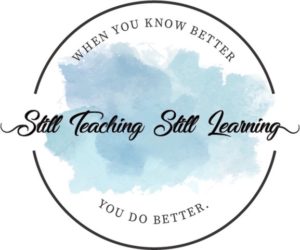
If you’re new to upper elementary grades or just want to know what to expect, here are eight generalizations I have found helpful to know. (By the way, this is the second post in a series where I will discuss each of these eight topics in more depth, along with some tips for how to address upper elementary students’ needs. You can read the first post in the series HERE.)



1 – They want to know the rules and expectations & they expect the teacher to be “the boss”.
2 – They thrive on routine with occasional changes to liven things up – they want you to be predictable, but engaging & fun.
3 – They want to be part of a supportive community. They don’t want to be embarrassed in front of their peers or to feel “stupid”. They worry about bullies.



4 – They want to be more independent & to be asked for their input. They still want to please their teachers (even though some may not show it).
5 – They still love to help and to feel useful.
6 – They want to know their teacher likes them & respects them.



7 – They want to learn more about the world and about topics they care about. They do question things and want to know the “why.” They are starting to understand different viewpoints besides their own, which makes for some thoughtful classroom discussions. They still get excited about learning! That being said, they will be at very different achievement levels (similar to lower grades), but they are better at hiding their lack of understanding. The curriculum is more difficult, but they are capable of rising to the challenge. Most of them love to work together and find that to be more engaging.
8 – They still want their grownups/families to be proud of them.



In this post, we’ll focus on the second observation: Upper elementary students thrive on routine with occasional changes to liven things up. They want you to be predictable, but engaging & fun.
1 – Establishing routines and procedures at the beginning of the year is very important. This is your chance to show your students what you expect and how you want them to behave and interact with others.
How to do this?
~Have a procedure (or create one) for everything. Teach those procedures during the first week of school and expect to review them (and practice) frequently during the first six weeks. (By the way – it’s always a good idea to revisit any routines and procedures after school breaks as well.)
Even though you might feel “they should know this by now, they’ve been in school for several years now, etc.,” trust me. They need to know what YOU expect and how YOU want them to follow procedures.
2 – Show your students that you are here to teach them and keep them safe, and that you want to get to know them and hear what they think.
How to do this?
~Provide lots of opportunities to talk in all subjects. (See links to some of my posts about engagement strategies below.)
~Be a presence in your classroom & show your students that you really see them. Look them in the eye when they’re talking. Circulate around the classroom and make comments about the good things you are seeing.
(By the way, circulating frequently helps you stay in close proximity to your students, keeping them focused and engaged and helping to prevent many behavior issues. Listen to your students during turn and talks or other partner or small group discussions. You will find yourself getting to know them and anticipating needs. This knowledge will pay off for you over and over.)



~Be firm and fair. Set fair rules and fair consequences for breaking the rules. Enforce the rules fairly. If you’re new to your school, check with your PLC or teaching team about your school’s expectations. Smart Classroom Management is an excellent website with specific tips for setting up your own classroom management system.
~Listen to your students. Admit when you are wrong or don’t know the answer to something. Tell them you will work on improving something or that you will work on finding the answer for them. This models your willingness to learn, whether that is learning from mistakes or finding answers to questions.



~Consider creating classroom goals for students to achieve. If your class has a particular procedure or issue that is challenging for them, work on earning tally marks for every time they are doing it correctly. When they meet the goal, give them some kind of “prize”, such as five minutes of extra recess or free time in the classroom. (This works well for issues like blurting out or talking when they’re supposed to be listening.)
~Stay in control of yourself! YOU are the adult. Focus on what you CAN control (your response, for example).



~Remember that calm is contagious. Take deep breaths and think before you speak. Be respectful to your students and expect the same from them. Even if you have to implement a disciplinary procedure such as a write-up, you can do so in a calm, respectful manner.
~Do not be afraid to ask for help with any problematic classroom routines or behaviors.



3 – At the beginning of the year – don’t worry about over-decorating your classroom. Focus more on making sure it is organized and clutter-free. This sends the message to students that we’re here to learn and everything in the room has a purpose.
How to do this?
~Leave some (or all) of your bulletin boards bare. Maybe cover them with paper and add a border, but leave them blank. Create charts WITH your students (instead of buying charts). This helps students see that this is their classroom, not just a teacher-decorated classroom.
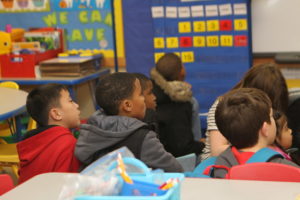


~Take pictures of your students and post them in your classroom. (Check your district guidelines before sharing photos on social media.)
~Know that classroom organization is one of those things you will always be tweaking as you notice areas or systems that need help. Get your students’ input (and thus their buy-in) for getting/keeping things organized.
~Responsive Classroom website has some good tips for classroom set-up HERE.



4 – When you see energy flagging or you feel that your students need a break, take a brain break or movement break.
There are lots of great ideas for movement breaks (yoga poses, Go Noodle, etc.,), but here’s a simple one: just give them a few minutes to talk amongst themselves. They love having the opportunity to chat and it gives you a moment to prepare yourself for the next part of the day. (Sometimes they are “over” doing teacher-led movement breaks by this age. But free time to chat or just do their own thing is always welcome.)
If you have an area right outside your classroom that is safe for walking or running laps, consider doing that as well.



5 – Teach growth mindset.
How to do this?
Here are some of my favorite resources:
~a poster with phrases that nurture a growth mindset
~making a chart together of phrases that students might say, and how they can be re-phrased
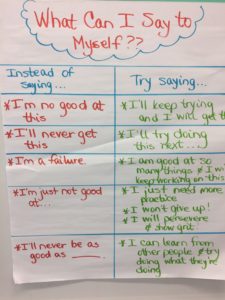


~YouCubed has outstanding lessons and videos related to growth mindset and math:
“Mistakes are Beautiful Things” lesson
“When You Believe, Amazing Things Happen” lesson
“Speed is Not Important” video
“The Importance of Struggle” video
~This is one of my favorite resources on Teachers Pay Teachers: Angela Watson’s Growth Mindset lesson on TPT



6 – Simplify as many of your classroom routines as possible.
How to do this?
~Don’t ask me why, but kids this age forget to write their names on their papers. It can drive you crazy if you let it, but here’s a tip: Have them highlight their name on their paper before turning it in. For whatever reason, that helps a lot!
~You don’t have to grade everything! If you need some tips on how to do that (and how to manage paper flow in general), here are some tips that can help!



~Some teachers love classroom jobs and some teachers find them a pain to manage. If you find them a pain, try assigning two students as your “student assistants” for the day. They can handle all the tasks that need to be done that day. Change the student assistants daily. (Your student assistants can even be the ones to change the names of the next student assistants on the board for you!)
~Specify a time to clean out desks and supply caddies and cubbies. Once a week helps keep things from getting too far out of control.
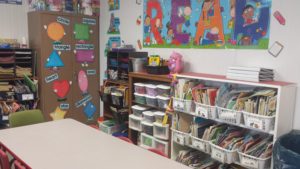


~For daily classroom cleaning, create something called “magic trash.” Secretly select some piece of trash (which could be anything – a pencil, paper, whatever). When your students clean up at the end of the day, the student who cleans up the “magic trash” gets a shout-out (or a small prize, if you want to do that).
~Consider keeping a suggestion box for students to leave notes for you about anything they think you should know. This helps prevent unnecessary drama and tattling that pulls everyone off track.
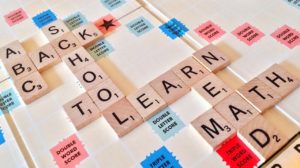


Some of my posts about focusing and motivating your students:
How to Motivate Your Students to Work Harder Than You’re Working
Motivating Students When They’re Tired of the Routine
Some of my posts about classroom engagement strategies:
Four Classroom Engagement Strategies for Group Work
Five Classroom Engagement Strategies for Content Area Reading
How to Keep Your Students Motivated & Engaged at the End of the Year
How to Engage Students’ Brains When Everyone is Ready for a Break
Brain-Friendly Strategies to Engage Students When Everyone is Ready for a Break
End of Year Activities to Keep Your Students Busy & Engaged
Engaging Activities for the First Two Weeks of School
For my upper elementary veteran readers, what would you add to this list?
I hope this helps you think about how you can support your students’ need for predictable routines and engagement! Remember to subscribe so you don’t miss my next posts about upper elementary students!
